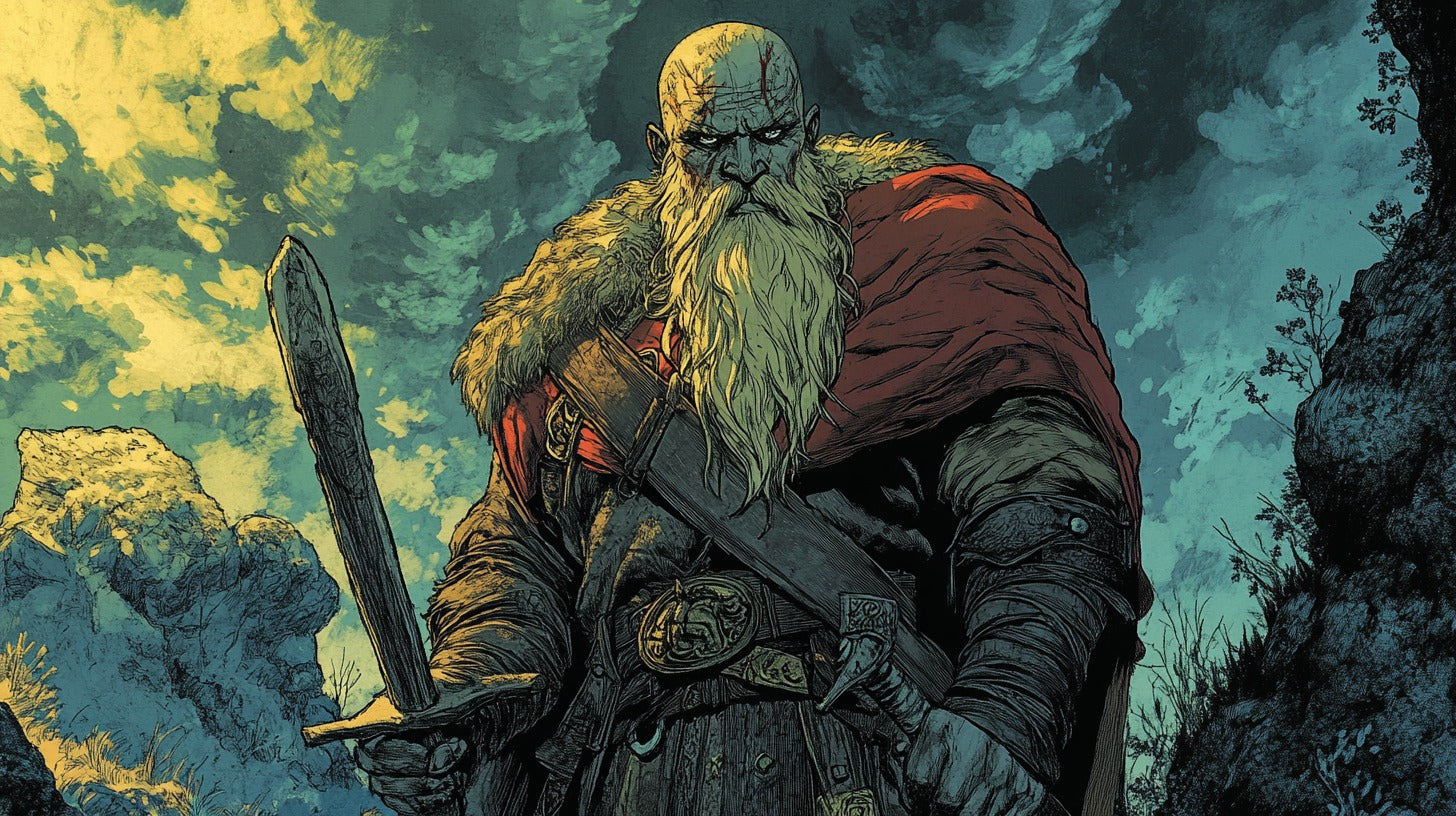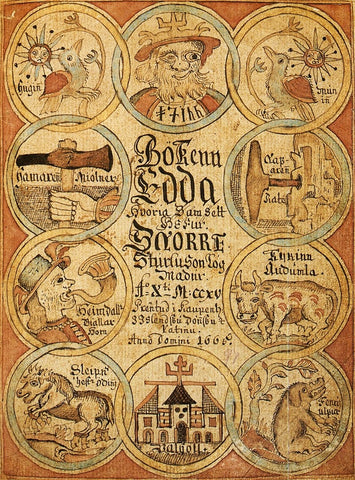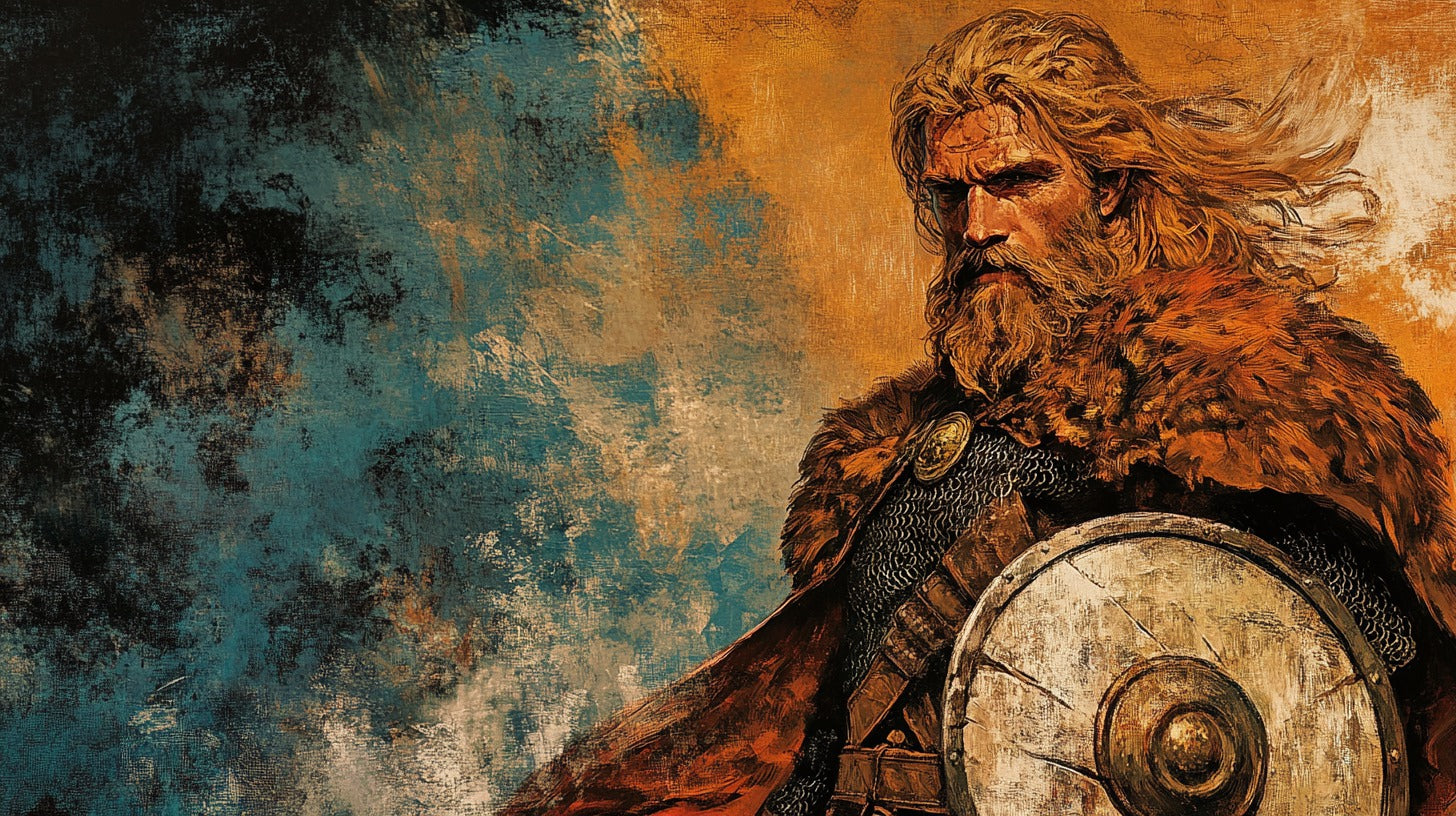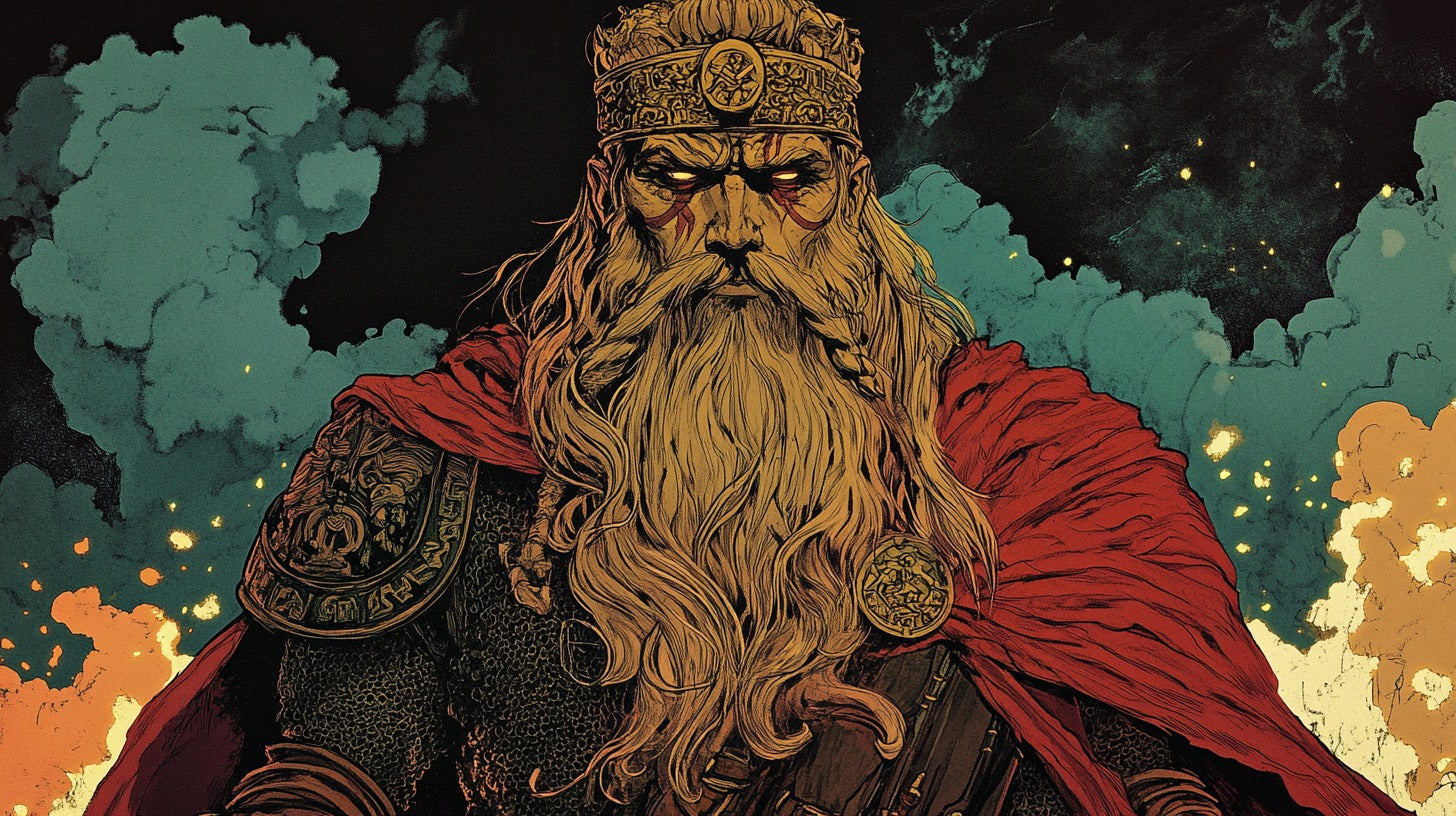
Skrýmir: The Giant Who Deceived Thor
Skrýmir stands as one of the most memorable figures in Norse mythology, appearing in a significant tale involving Thor, the god of thunder. The giant plays a central role in demonstrating the complex relationship between gods and giants (jötnar) in Norse cosmology, while also serving as a manifestation of Útgarða-Loki, a powerful being capable of creating grand illusions.
Literary Sources

The Prose Edda
The primary source for the tale of Skrýmir comes from Snorri Sturluson's Prose Edda, specifically within the Gylfaginning section. Written in the 13th century, this text preserves the most complete version of the story, though scholars note that Snorri likely drew from earlier oral traditions and potentially lost written sources.
Other Mentions
While the Prose Edda contains the most detailed account, references to the giant and the events surrounding Thor's journey appear in various skaldic poems. However, these mentions are fragmentary and often allusive rather than narrative in nature.
The Tale of Thor's Journey

Skrymir and Thor (c. 1891), by Louis Huard (Public Domain)
Initial Encounter
According to the Prose Edda, Thor, accompanied by Loki and Þjálfi, encounters Skrýmir while traveling through Jötunheimr, the realm of the giants. The companions initially find the giant sleeping in what appears to be a large hall, though this later proves to be a detail crucial to the tale's deception.
The Glove Incident
In one of the narrative's most famous episodes, Thor and his companions initially mistake Skrýmir's glove for a hall, seeking shelter within what they believe to be a building with a side chamber. This misunderstanding establishes the theme of perception versus reality that runs throughout the story.
The Three Challenges
During their journey together, Skrýmir's sleeping form becomes the target of Thor's hammer, Mjölnir, three times. Each time, Thor strikes what he believes to be killing blows, yet Skrýmir merely stirs, asking whether a leaf, an acorn, or some bird droppings had fallen on his head. This sequence demonstrates both the giant's apparent invulnerability and his clever deception.
Útgarða-Loki's Revelation
The tale reaches its climax when Skrýmir is revealed to be Útgarða-Loki himself, having used powerful illusions to deceive Thor and his companions. The giant explains that had Thor's blows landed truly, they would have destroyed mountains - which indeed show evidence of the thunder god's attacks. This revelation serves to demonstrate both the power of illusion and the genuine strength of Thor, whose seemingly ineffective blows actually reshape the landscape.
Symbolic Interpretations
Scholars interpret the Skrýmir narrative as representing several key themes in Norse mythology: the limits of divine power, the nature of perception versus reality, and the complex relationship between the Æsir (gods) and jötnar (giants). The tale particularly emphasizes how even the mighty Thor can be deceived by appearances, suggesting a Norse worldview where power alone does not guarantee success.
Cultural Impact

Thor issues blows to the sleeping Skrýmir while the group looks on in an illustration (1842) by Friedrich Ludwig von Maydell (Public Domain)
Modern Adaptations
The figure of Skrýmir has influenced modern popular culture, appearing in various forms of media including literature, comics, and games. However, many modern adaptations simplify the complex nature of the original tale, often reducing Skrýmir to a straightforward antagonist rather than the multifaceted figure presented in the Prose Edda.
Conclusion
The tale of Skrýmir represents one of Norse mythology's most sophisticated narratives, combining elements of humor, trickery, and profound philosophical implications about the nature of power and perception. Its preservation in the Prose Edda has allowed modern audiences to appreciate the complexity of Norse storytelling and its ability to convey deeper truths through seemingly straightforward tales.
Frequently Asked Questions (FAQs)
- Who is Skrýmir in Norse mythology?
Skrýmir is a giant who appears in Thor's journey to Útgarða-Loki's fortress, later revealed to be Útgarða-Loki himself in disguise.
- What is the significance of Thor's failed attacks on Skrýmir?
The attacks demonstrate both Thor's strength and the power of illusion, as the blows actually created valleys in nearby mountains.
- Where is the story of Skrýmir found?
The primary source is Snorri Sturluson's Prose Edda, specifically in the Gylfaginning section.
- What is the meaning of Skrýmir's name?
The name Skrýmir is believed to be related to words meaning "boaster" or "braggart" in Old Norse.
- How does the story end?








